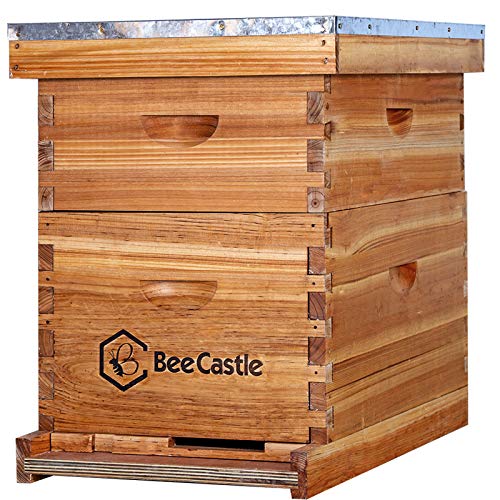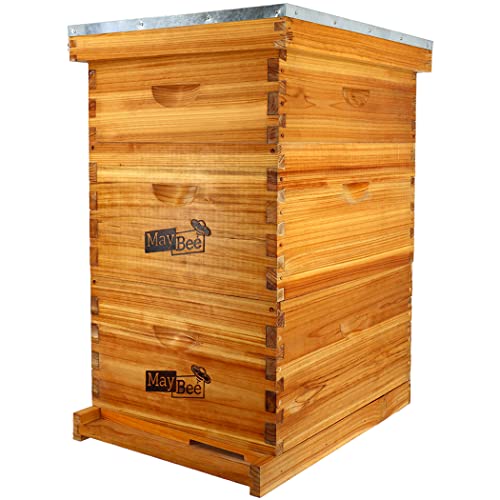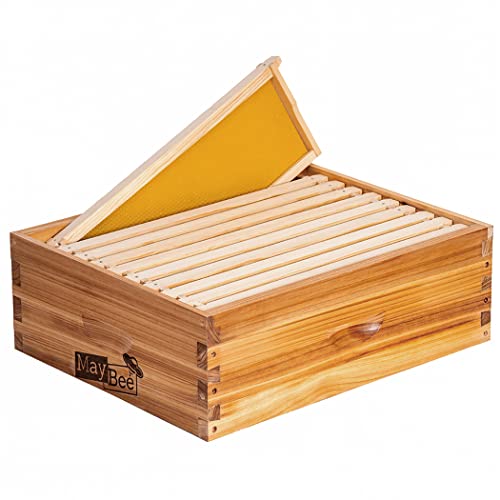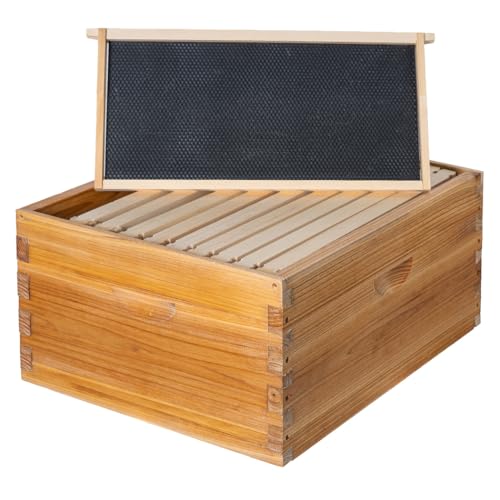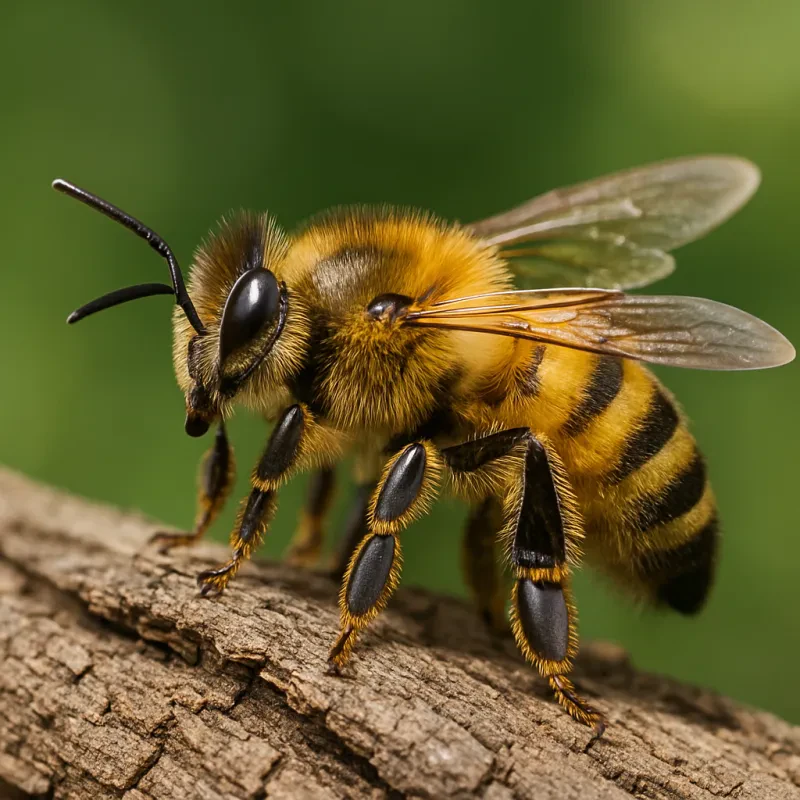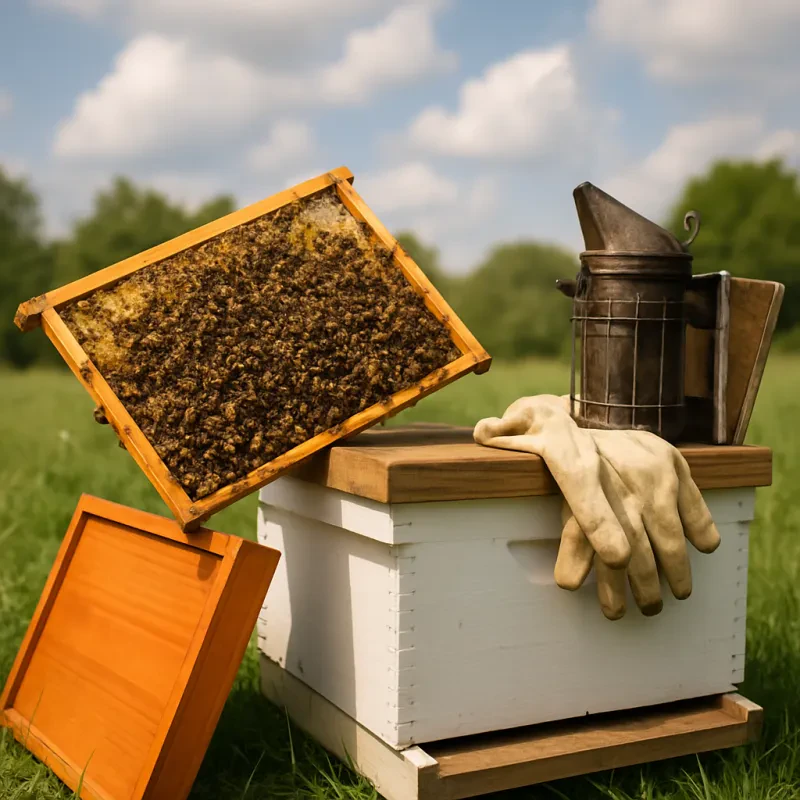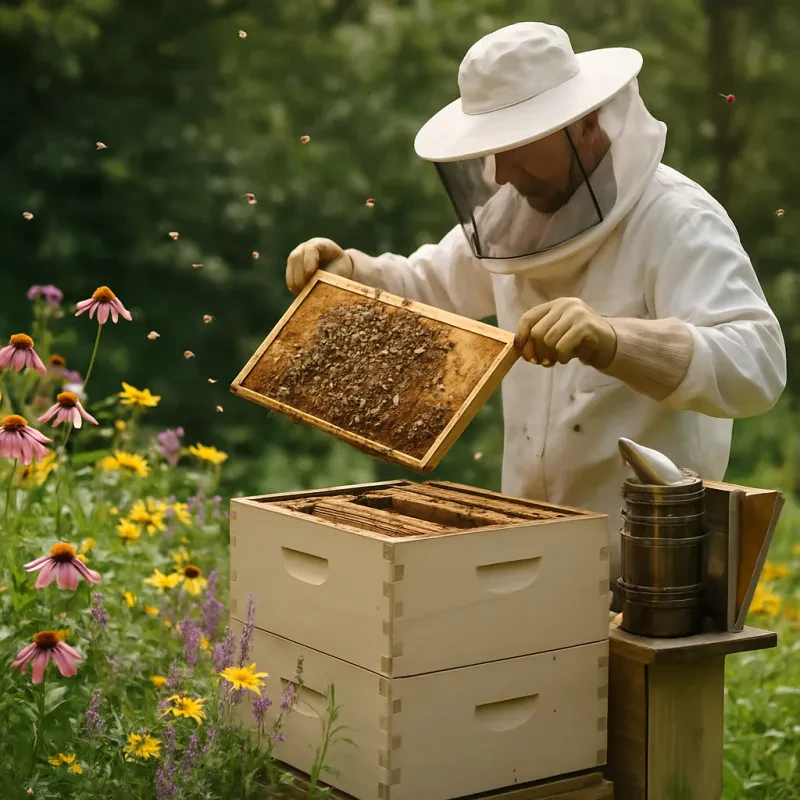1. Beginners 8 Frame Complete Hive Kit
This kit typically comes with everything you'll need to get started—frames, foundation, a smoker, and tools. The 8-frame hive is a manageable size for new beekeepers, offering enough space for bees to thrive without being overwhelming.
2. Top Bar Hive Kit
If you're looking for a more natural approach, a top bar hive kit is a great choice. These kits allow bees to build their comb without foundation, which can be a more intuitive process. Plus, many new beekeepers find top bar hives easier to tend to as they're comfortable to work with.
3. Langstroth Hive Kit
The Langstroth hive is a classic and one of the most popular designs. Many beginner kits include everything from the hive body to supers and even entry and exit tools. They tend to be user-friendly, making them perfect if you're just starting out.
Remember, when browsing bee hive kits for sale, look for options that come with good instructions and support. Starting beekeeping should be fun and educational, and a great kit makes all the difference!
Essential Features of Quality Bee Hives
When it comes to choosing the right bee hive kits for sale, there are a few key features you should keep an eye out for. These will not only ensure your bees thrive but will also make your beekeeping experience a lot smoother.
Durability: A quality bee hive is built to last. Look for materials that resist weather and wear. Wooden hives made from cedar or pine are popular because they can withstand the elements. Also, check that the hive is well-assembled, so it stands strong even in windy conditions.
Ventilation: Bees need proper airflow to stay healthy. Good bee hive kits for sale will often have ventilated designs. This helps prevent moisture buildup, which can lead to mold or pests. Look for hives that come with screened bottom boards or strategically placed openings for air circulation.
Ease of Use: Consider how user-friendly the hive is. Features like easy access for hive inspections and removable frames can make your life so much easier. Some kits even come with helpful tools like self-spacing frames that keep everything organized.
Expandable Design: As your bee colony grows, you’ll want a hive that can grow with it. Many quality bee hive kits for sale are designed to be easily expandable. This means you can add more boxes or supers without needing to completely switch hives or start over.
Choosing the Right Hive for Your Farm
When it comes to beekeeping, picking the right hive is super important. With so many bee hive kits for sale, it can feel a bit overwhelming. You want to make sure you choose a hive that fits your needs, the space you have, and the kind of bees you plan to keep.
First things first, think about the type of hive. The most common are Langstroth hives, which are great for beginners because they’re easy to manage and expand. If you're short on space or want something a bit more portable, you might want to check out top-bar or flow hives. Each type has its pros and cons, so consider what works best for you and your setup.
Next, consider your local climate. Some hives are better suited for colder areas, while others thrive in warmer climates. If you're unsure, reach out to local beekeeping clubs or online communities. They can offer advice based on their own experiences and the specific challenges you might face.
Lastly, budget is a big factor. While there are plenty of affordable bee hive kits for sale, remember that saving a little money now might lead to spending more later. Look for quality options that come with good reviews. You want a reliable hive that will last through the seasons without needing constant repairs.
Tips for Successfully Managing Your Bees
Managing bees can feel overwhelming at first, but with the right approach, it becomes an exciting hobby. Here are some tips to help you confidently care for your buzzing friends.
1. Choose the Right Location: Finding the right spot for your hive is essential. Look for a sunny area that has some shelter from the wind. Avoid placing it near heavy foot traffic to minimize stress for your bees.
2. Regular Inspections: Check on your hive every couple of weeks, especially during the busy spring and summer months. Look for signs of disease, pests, or queen issues. Regular inspections help you catch problems early and keep your hive healthy.
3. Know Your Bees: Every bee species has different behaviors and needs. If you're using one of the popular bee hive kits for sale, read up on the specific type of bees that come with it. Understanding their habits can help you manage your hive better.
4. Keep Records: Jot down your observations during hive inspections. Note any changes you see, like how much honey they've produced or if the queen is laying eggs. This info will be valuable as you learn and improve your beekeeping skills.
5. Don't Forget the Bees' Needs: Ensure your bees have access to fresh water and a variety of flowering plants nearby. This will help them thrive and support their foraging instincts.

